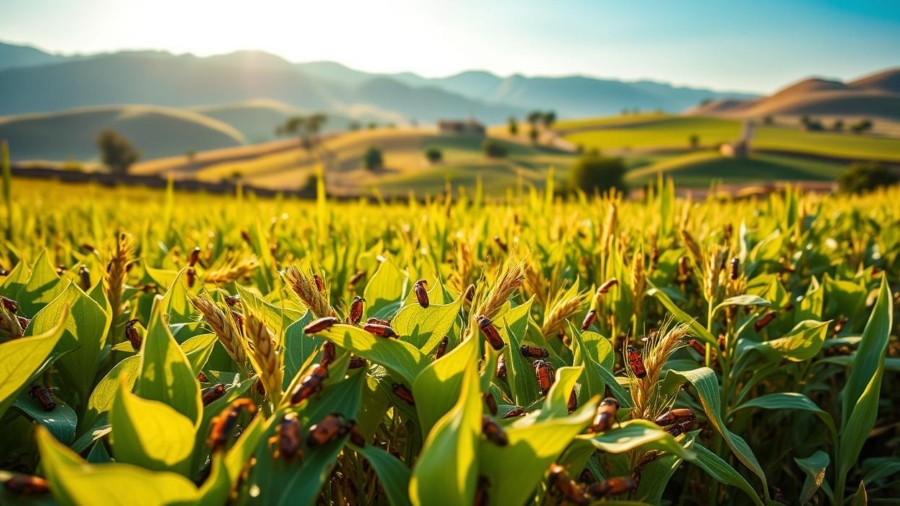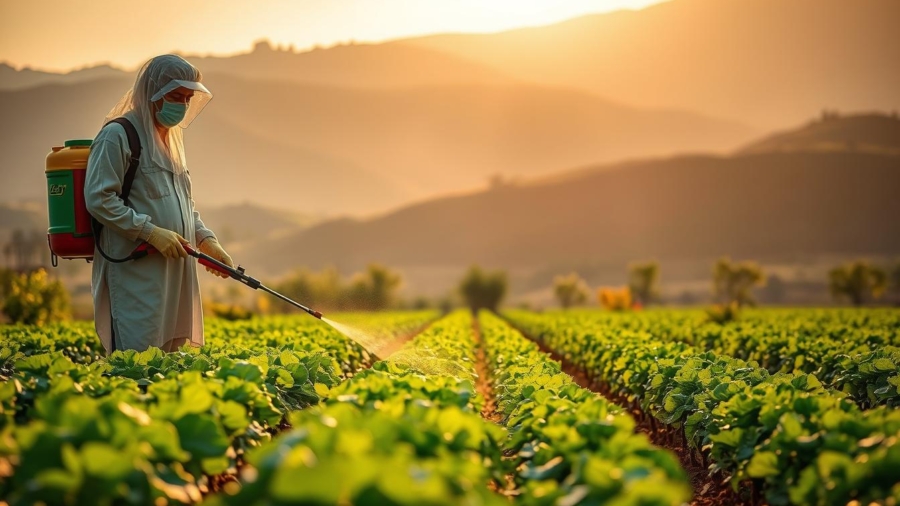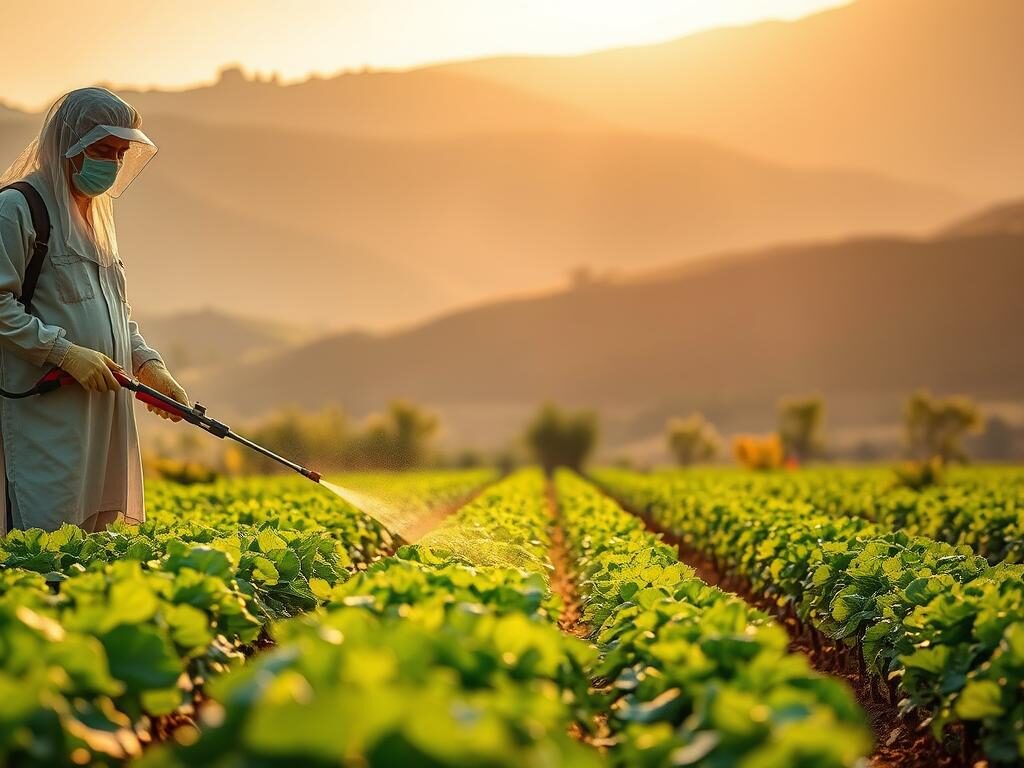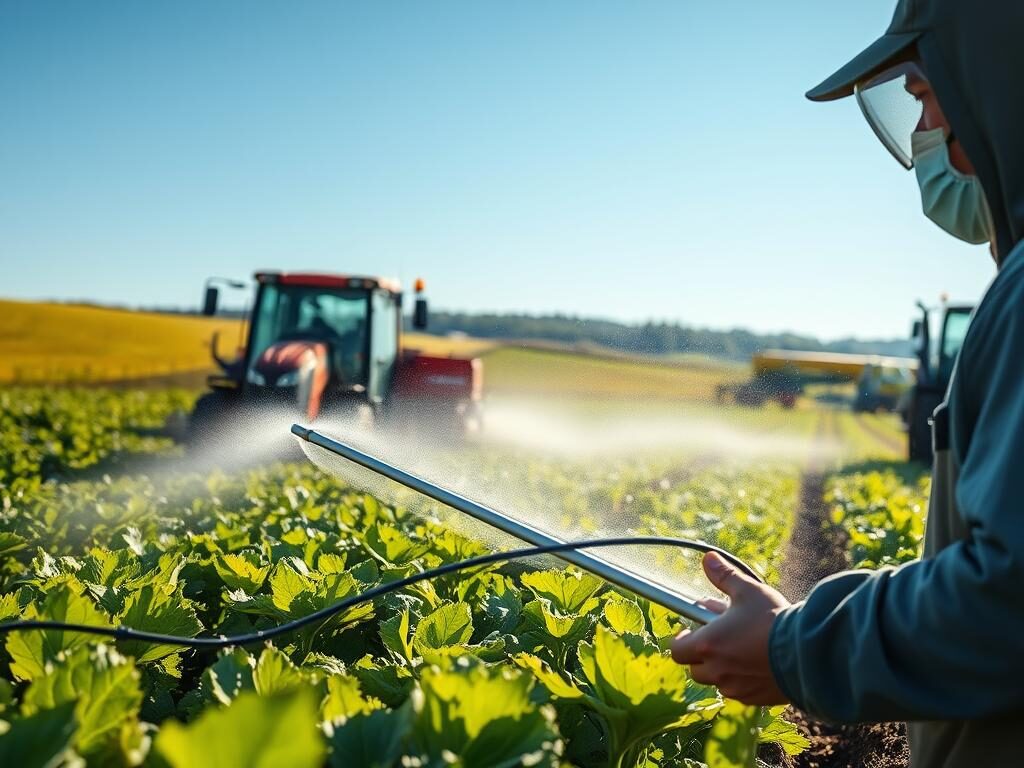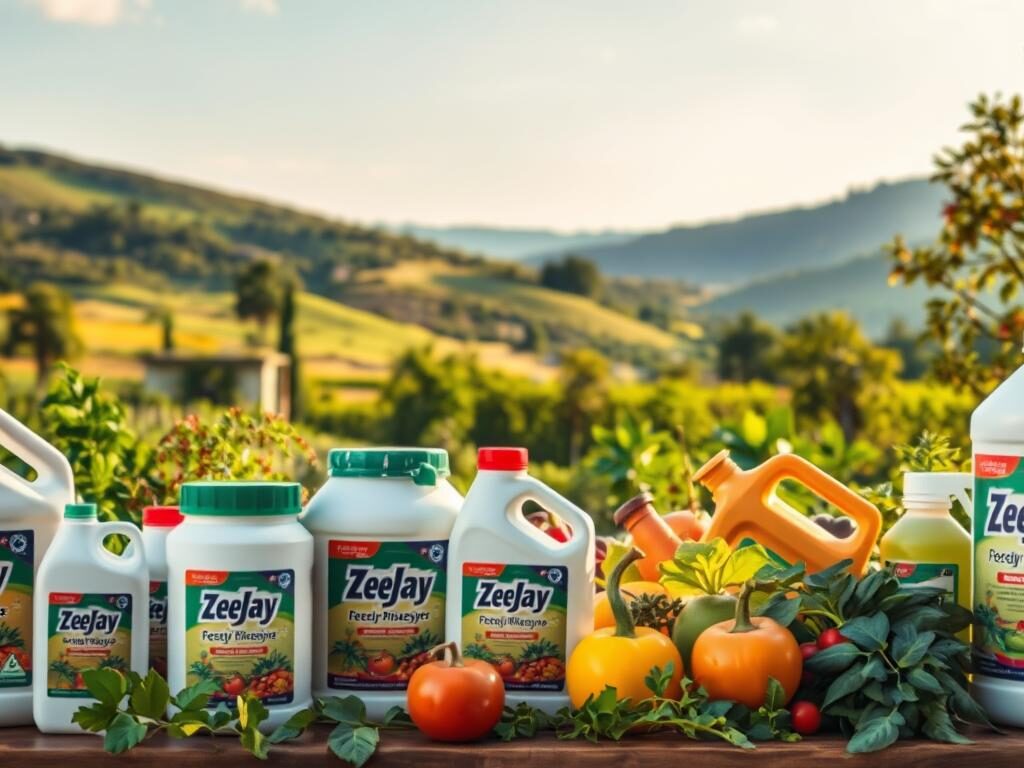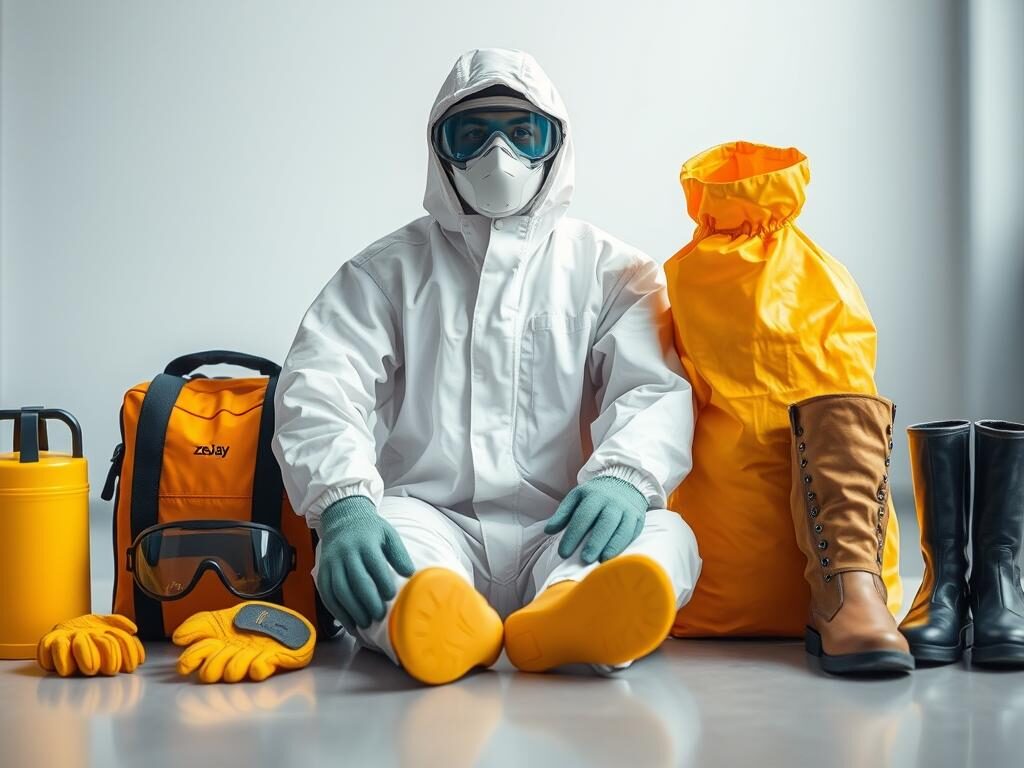As an Albanian farmer, spotting crop infestation signs early can save your harvest. This guide highlights the key crop pest detection methods and steps to act fast. Whether you farm wheat, corn, or vegetables, recognizing crop damage identification clues like discoloration or stunted growth is vital. Learn how to apply proven agricultural pest control techniques to stop infestations before they spread.

Key Takeaways
- Look for five clear crop infestation signs to protect your fields.
- Early crop pest detection prevents losses in Albanian farming.
- Use targeted agricultural pest control methods suited to your crops.
- Address farming pest problems before they harm yields.
- Quick action reduces crop damage identification and recovery time.
Understanding the Threat of Crop Infestations
early can mean the difference between a thriving harvest and significant losses. The Mediterranean climate creates ideal conditions for pests, making vigilance critical to protect your livelihood.
Why Early Detection Matters for Albanian Farmers
Spotting infestations early prevents widespread damage. Key benefits include:
- Reduced chemical use through timely action
- Protection of crop quality and market value
- Avoidance of costly replanting
The Economic Impact of Untreated Infestations
“Untreated infestations can cut yields by up to 30%, wiping out profits for small-scale farmers.” – Albanian Agricultural Research Institute
Pests like aphids and fungi don’t just damage crops—they drain your resources. The pest economic impact includes lost income from poor harvests and higher treatment costs. Farmers facing Albanian farming challenges must act before pests escalate into crises.
Common Types of Crop Pests in Albania
Mediterranean crop pests thriving here include:
- Aphids (sap-sucking insects damaging vineyards and vegetables)
- Powdery mildew (fungus affecting tomatoes and grapes)
- Corn borers (insects targeting maize crops)
Knowing these pests’ seasonal patterns helps you plan defenses. Early pest detection benefits include targeting treatments to protect vulnerable crops at critical growth stages.
Sign #1: Unusual Discoloration in Leaves and Stems
Unusual plant discoloration causes can signal hidden threats to your crops. Check your plants regularly for leaf color changes like yellowing edges, brown spots, or mottled patterns. These plant health indicators may reveal pest infestations or crop disease symptoms before visible insects appear.
Start by comparing affected leaves to healthy ones. Sudden yellowing between veins often points to nutrient issues, while irregular spotting suggests pest damage. Stem discoloration—dark patches or corky textures—can indicate boring insects or fungal infections. Use a magnifying glass to spot tiny pests hiding under leaves.
- Leaf inspection: Look for circular spots (mites), yellow veins (aphids), or silver streaks (thrips).
- Stem check: Press gently on discolored areas; soft, mushy stems signal rot, while hard lesions point to bacterial infections.
- Compare crops: Note if discoloration spreads from one plant to others, signaling active infestations.
“In Albania’s olive groves, early leaf color changes saved many harvests. Act fast when you see red streaks—those are scale insect warnings,” says Agronomist Erion Hoxha of the Tirana Agricultural Institute.

Don’t mistake environmental stress for pests. Overwatering or extreme heat can cause yellowing too. Document discoloration patterns with photos and note when symptoms started. Share findings with local extension services for accurate diagnosis.
Sign #2: Visible Pests and Insect Activity
Seeing bugs on your crops is a clear warning. But many pests hide until damage is severe. Learn to find insects, understand their habits, and act before infestations spread.
Identifying Common Crop Pests
Look for insect identification guide species like aphids, whiteflies, or the olive fruit fly. These pests feed on leaves, sap, or fruit. Look for clusters on stems or yellowing foliage.
Where to Look for Hidden Insect Activity
- Inspect undersides of leaves for eggs or nymphs.
- Search soil surfaces for larvae or pupae.
- Peel back damaged fruit to find tunneling pests.
Understanding Pest Life Cycles
Learn agricultural pest life cycles to time interventions. Target larvae before they mature to stop damage. Track when pests lay eggs to disrupt their cycle.
Documentary Evidence: Taking Photos for Expert Consultationation
Capture clear photos using crop pest photography tips: zoom in on insects, include damaged areas, and mark scale with a coin. Share these images during expert pest consultation calls. Detailed visuals help specialists recommend treatments faster.
Sign #3: Stunted Growth and Poor Yield
Stunted plant growth might mean hidden pests are at work. If your crops aren’t growing as they should or aren’t producing well, pests could be the reason. Look at your plants against standards for crops like tomatoes, wheat, or olives.
Healthy maize, for example, should grow 2–3 feet by mid-season. If it’s shorter, it could be a sign of reduced harvest causes.
- Root-feeding insects block nutrient absorption, causing plant development issues.
- Leaf-eating pests reduce photosynthesis, slowing growth and leading to yield reduction factors.
Stunted stems or smaller-than-normal fruits mean pests are disrupting growth cycles. For olives, the olive fruit fly can cut yields by targeting young fruits. Spotting stunted plant growth early lets you act before full damage occurs.
Check roots for grubs or soil pests—these weaken plants silently.
“Delayed intervention doubles losses. Check growth rates weekly to spot trends early.”
Track flowering patterns too. Fewer blooms or shriveled buds warn of hidden infestations. By linking growth delays to pest activity, you can address crop growth problems before they destroy entire harvests.
Sign #4: Abnormal Plant Structures
Unusual shapes in your plants are not just oddities—they’re warning signs. crop structural problems like twisted stems or misshapen leaves could mean hidden threats. Keep an eye out for plant growth abnormalities that disrupt normal development. Early detection here can save your harvest before damage spreads.
Leaf Deformities That Signal Trouble
Leaf deformities causes often trace back to pests. Look for these warning signs:
- Curling edges: Could signal aphid feeding
- Puckered surfaces: A sign of spider mite damage
- Blisters or mines: Often from thrips or larvae
Unusual Growths and Their Meanings
Plant galls identification starts with spotting swellings on stems or leaves. These galls form when insects lay eggs, draining plant energy. Look for:
- Round growths: Mite-induced galls
- Wart-like bumps: Fungal infections
- Clustered nodules: Nematode activity
Root Issues That May Indicate Infestation
Root damage signs include knots or discolored roots. Nematodes and wireworms cause these issues. In Albanian vineyards, grapevines with swollen roots may show grapevine fanleaf virus symptoms. Vegetable crops like tomatoes often display twisted roots from nematodes. Gently inspect roots without breaking them during checks.
Sign #5: Honeydew, Sooty Mold, and Other Secretions
Seeing sticky stuff or black mold on plants? These are honeydew insect signs that need fast action. Honeydew, a sweet liquid from pests like aphids, draws sooty mold. Spotting these
Immediate Actions Upon Discovering Infestations
Clean leaves with a damp cloth or mild soap to get rid of honeydew. For sooty mold treatment, cut off infected parts and boost air flow to stop mold. Move infected plants away to stop the spread.
Diagnostic Tools for Albanian Farmers
Use the CropMonitor app to check leaves for pest secretion identification. Check out local ag offices for free pest infestation diagnosis kits. The Albanian Agricultural Institute has workshops on reading residue patterns for local pests.
Quarantine Procedures to Prevent Spread
- Mark contaminated zones with brightly colored tape.
- Disinfect tools between field sections using chlorine-based sprays.
- Require workers to change boots and clothing when moving between areas.
These crop quarantine methods keep valuable crops safe, like Albania’s famous Vlora olives and Korça tobacco. Quick action is key—pests spread fast in warm, humid weather.
Preventive Measures for Common Crop Infestations
Keep your fields safe with crop pest prevention from Albanian farming practices. Begin with integrated pest management. This method uses different strategies to stop pests before they harm your crops.
- Rotate crops yearly with plans for sustainable crop protection. For example, switch tomatoes with beans to stop pests.
- Grow preventative pest control friends like marigolds with peppers. They keep soil nematodes away.
- Introduce beneficial bugs like ladybugs to fight aphids naturally.
| Strategy | How It Works |
|---|---|
| Crop Rotation | Disrupts pest life cycles with seasonal changes |
| Companion Planting | Natural repellents reduce pest attraction |
| Timing | Plant at optimal dates to avoid pest peaks |
Choose crops like Tomato Moneymaker or Albanian wheat strain 2023 that resist pests. Use row covers for young plants. Regular soil checks and watching for pests are crucial for integrated pest management. Small steps now can save big costs later. Your harvest’s success depends on these early actions.
Effective Treatment Options to Save Your Harvest
When pests attack your crops, you must act fast. This section shares effective ways to fight infestations and safeguard your land’s future.
Organic and Chemical Control Methods
Decide between organic pest control methods like neem oil or Bacillus thuringiensis. Or choose agricultural pesticide use that meets EU standards. Look for certified products from local suppliers like AgroAlbania.
Timing Your Treatments for Maximum Effectiveness
- Target pest life cycles, like larvae, for better results.
- Use a treatment timing guide that considers weather. Avoid spraying during rain to prevent runoff.
- Change control methods every two weeks to prevent pest resistance.
Crop-Specific Treatment Approaches
- Crop-specific pest control for olives: Use kaolin clay to keep scale insects away.
- For wheat fields, pheromone traps can stop pests from mating.
- Vegetables benefit from soil solarization before planting to fight soil pests.
Sustainable Pest Management Strategies
Combine different methods for lasting results. Sustainable farming practices like crop rotation and cover cropping help prevent future problems. Use sticky traps to monitor pests weekly and adjust treatments as needed.
“IPM reduces chemical reliance by 40% while maintaining yields,” states the Albanian Agricultural Research Institute.
Switch between organic and chemical methods to avoid resistance. Always check labels and follow safety guidelines.
When to Seek Professional Agricultural Support
When pests overwhelm your crops, it’s time to call for help. Here’s how to know when to ask for assistance:
- Leaf damage covers more than 30% of plants
- Infestations spread rapidly across multiple fields
- Home treatments fail after two attempts
- You notice soil-borne pests affecting root systems
Albanian farm consultants offer severe infestation help with custom solutions. Government agricultural extension services give free assessments. Private professional pest management firms charge based on farm size. Here’s how to pick:
| Resource | Service | Cost Notes |
|---|---|---|
| National Agriculture Institute | Diagnostic testing | Subsidized rates for smallholders |
| AgroConsult Albania | Full pest eradication plans | Sliding scale pricing |
| Shkolla Agrare | Training programs | EU-funded scholarships available |
“Early professional involvement can cut infestation recovery costs by 40%.” – Agronomist Lorena Qirjako, Albanian Farmers Union
Contact crop protection experts right away if you see widespread wilt or larval swarms. Bring photos of damage and soil samples to get faster solutions. Programs like the Regional Pest Response Network also help with group efforts for savings.
Conclusion: Protecting Your Agricultural Investment
Recognizing the five warning signs of infestation is key to protecting your farm. Spotting discoloration, pests, or abnormal growth early is crucial. It shields your Albanian agricultural investment and ensures long-term farm protection.
Creating a pest management plan tailored to your crops and local conditions is essential. This plan might use organic or chemical methods, depending on your needs. These steps help secure your yields today and support a sustainable farming future.
Regular checks and smart strategies like crop rotation are vital. Climate shifts and new regulations require flexibility. Partner with local experts to adapt your approach.
By prioritizing proactive measures, you invest in resilient harvests and a thriving operation. Stay informed about pest patterns and treatments to keep your farm strong. Small steps today build a legacy of healthy crops and a prosperous agricultural future.
FAQ
What are the early signs of crop infestations I should look for?
Look for unusual leaf and stem colors, visible pests, and stunted growth. Also, check for abnormal plant shapes and secretions like honeydew or sooty mold. Spotting these signs early can help you act fast.
Why is early detection crucial for my farm’s productivity?
Catching pests early means you can stop big losses. It saves money and keeps your crops quality. This protects your farm’s future.
How do I identify specific pests that may be affecting my crops?
Check your crops for insects and damage signs. Knowing common pests in Albania, like aphids, helps you spot them.
What steps should I take if I discover an infestation?
Isolate affected plants and assess the damage. Take photos as evidence. Then, get advice from agricultural experts on treatments.
Can I use organic treatment options for pests?
Yes, organic treatments like botanical insecticides work well. Look for local sources to ensure they fit your needs.
When should I seek professional help for pest management?
If pests are severe or you can’t handle them, get professional help. Experts can save a lot of your crops.
Are there preventive measures I can take to avoid future infestations?
Yes! Try crop rotation, companion planting, and physical barriers. Also, plan your planting and harvesting to avoid pest peaks.
What resources are available for Albanian farmers dealing with pest issues?
Albanian farmers can find help from government services, universities, and local experts. These offer tailored advice and solutions.
How can I create a pest management calendar?
Track pest signs and seasonal patterns. Use this to make a calendar for monitoring and action. It should fit your farm’s needs.


